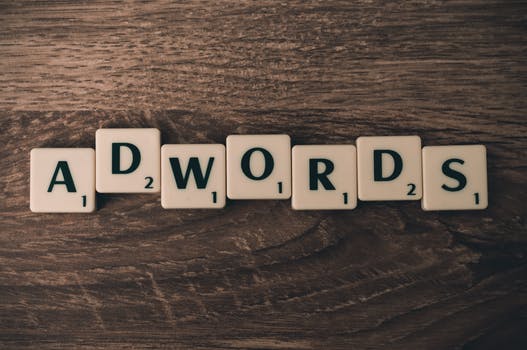Gone are the days when traditional marketing mediums such as newspapers and the Yellow Pages were the go-to places for any business to get a wide reach. The internet era has brought in many different avenues for businesses to reach their market and most of them have become highly-interactive, real-time and targeted.
Adwords is one such digital marketing platform that allows business to reach potential customers. The process seems very simple on the surface, but as with any marketing campaign, it is only when the finer details are managed properly that you can produce the intended results. An Adwords campaign typically requires shorter time and is quick to implement, but in order to get the most bang for your buck, mastery of those details is key.
Here are 7 things most businesses get it wrong and how you can avoid it:
-
Not making use of conversion tracking
Never underestimate the power of numbers as it will give you a clear picture of whether your campaign is working or not and will be your primary tool to helping improve its performance.
“Conversion tracking” is a snippet of code placed on your website that tells you if a customer filled out a form or not. When a visitor to your site triggers your required action, in this case, fill out a form, that code will communicate to Adwords and will relay the information on what keyword and ad were responsible for that specific conversion.
When this system is in place, you are made aware of what keywords and ads are actually converting and which ones are not. You can then make informed decisions on which campaigns to continue with and which ones to stop because they are not providing you with enough ROI.
A best practice tip is to set-up a campaign with a sufficient amount of time and set-up a conversion tracking report to help make an assessment. Your SEO provider should be able to help you with this.
-
Not customising settings and only using the default settings in Adwords
Most may not know this but when advertising with Adwords, you have the option to advertise on multiple ad networks – Google Search, Google Search Partners and Display Network. Each of these have their own unique audience, volume of visitors and even different strategies in place.
Here is a better picture of the differences between the three:
– Google Search – this is advertising only on Google.com
– Google Search Partners – these are sites such as AOL.com, Ask.com and Shopping.com that use their own Search Engine using data from Google.
– Google Display Network – estimated by Google to cover 80% of all web visitors on the internet, these are the type of ads shown on the sidebar of sites like NYTimes.com. About.com or ESPN.com.
In terms of the settings, the default recommendation by Google is to use both the Google Search Network and Display Select – a hybrid approach that combines all three networks. However, this may not be the best option, and my recommendation would be to start with the Google Search network ONLY. Although it means starting with the least amount of exposure, this approach to your Pay Per Click (PPC) advertising will get you off to a good start. After you’ve seen how your initial campaign runs and performs, you can then test other networks and assess if they work for you. This will help you to also refine your target and goals.
-
Limiting your campaigns to a daily budget
Whenever a PPC campaign is set-up, there is the option to “limit by a budget”, and although it sounds like a practical idea, it is actually counterproductive to your campaign performance. If this option is ticked, it means that on a daily basis, your ads get a budget cap and when the cap is reached, your ad stops getting shown online. In effect, when a potential customer is online and does the search later in the day, they will not see your ads, and you’ve just lost a potential customer.
How to avoid this:
– If you have enough flexibility for your budget, increase your daily budget.
– Choose your keywords wisely and limit it to those that are high-yielding, so you don’t use up all your budget for the day with too many keywords.
-
Not making use of negative keywords
Since not everyone is your target market, you add keywords that are used so that your ads DO NOT show up in specific searches. With online ads no longer being limited by geographical or time barriers, it all the more makes sense to be able to show the ad to those who can actually use your service and not to everyone else. Adding these negative keywords ensures that you show up in the right searches and to those people who are requiring your service/product.
-
Limiting to broad match keywords only
If looking for a keyword is daunting enough, note that there are actually 5 basic types of keywords you can use for your PPC campaign – broad, modified broad, phrase, exact and negative. I’ve explained negative on the prior item, but you may look up the others here.
The default settings in Google is a broad match, which means, your ad may show in search items containing your keywords in any order and alongside other terms. Your ad may also show up with any close variations of your keywords.
An example from Google is for the product “women’s hats”, and by adding the keywords “women’s hats” into your campaign, your ad will show up on any searches matching exactly your keywords and or anything similar to it. The downside to this is, it could also show up on searches such as free women’s hats, ugly hats or horrible hats.
Do note this strategy is NOT for beginners and must only be used by someone with enough expertise in this area to really make it work.
-
Poor landing pages
This is one of the likeliest pitfalls to a successful Adwords campaign, as it is so easy to get carried away by the campaign itself and missing a critical element in the process – the landing page or your website.
A key question to ask yourself: How ready is my website and how likely are visitors going to just browse around, bounce off or convert into a sale? The tip to this is make your landing page as easy to navigate as possible and right on the money (more literally than figuratively). Always bear in mind that you are fighting for the short attention span of your audience and while you have that you want them to say yes to you in the easiest, quickest possible way. Even in a physical store setting, if a store is easy to navigate, items are easy to find, and the purchase process is easy, shoppers are more likely to buy compared to stores that do not offer the same type of set-up.
-
Forgetting about ad extensions
What are ad extensions? Simply put, ad extensions are tidbits of information about your business that you can add to your ads. These can be your phone number, a specific landing page on your website or any bit of information that will help increase the visibility of your ads. Ad extensions do not cost anything which is why it is great to leverage on it.
There are many ad extensions available, and you need to find one that is suitable to your business. The most commonly used ones are site links, callouts and structured snippets. You can also experiment and set-up at least four site links to see how they fare.
Now that you know these 7 mishaps, can you pinpoint if your campaigns had the same issues?







